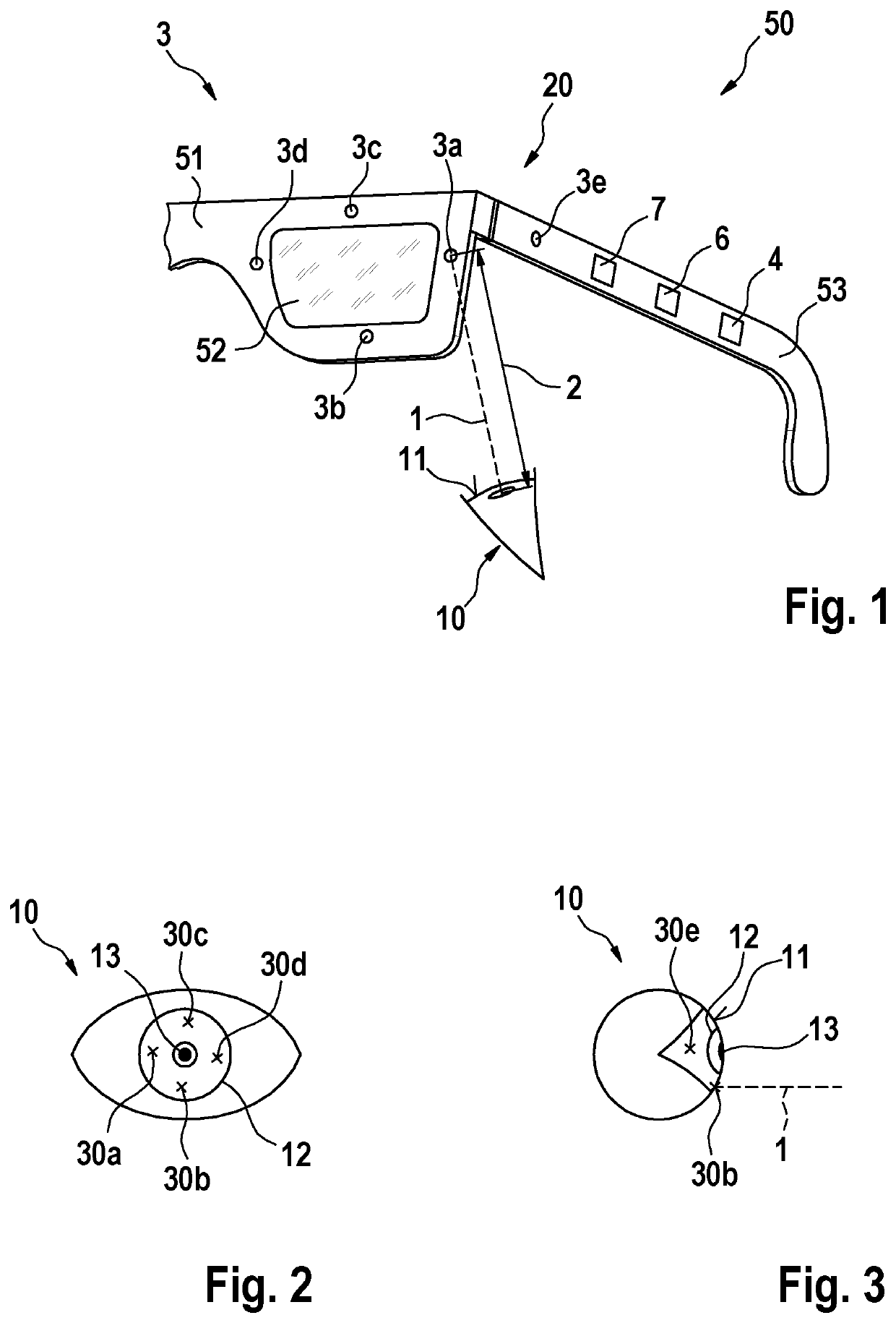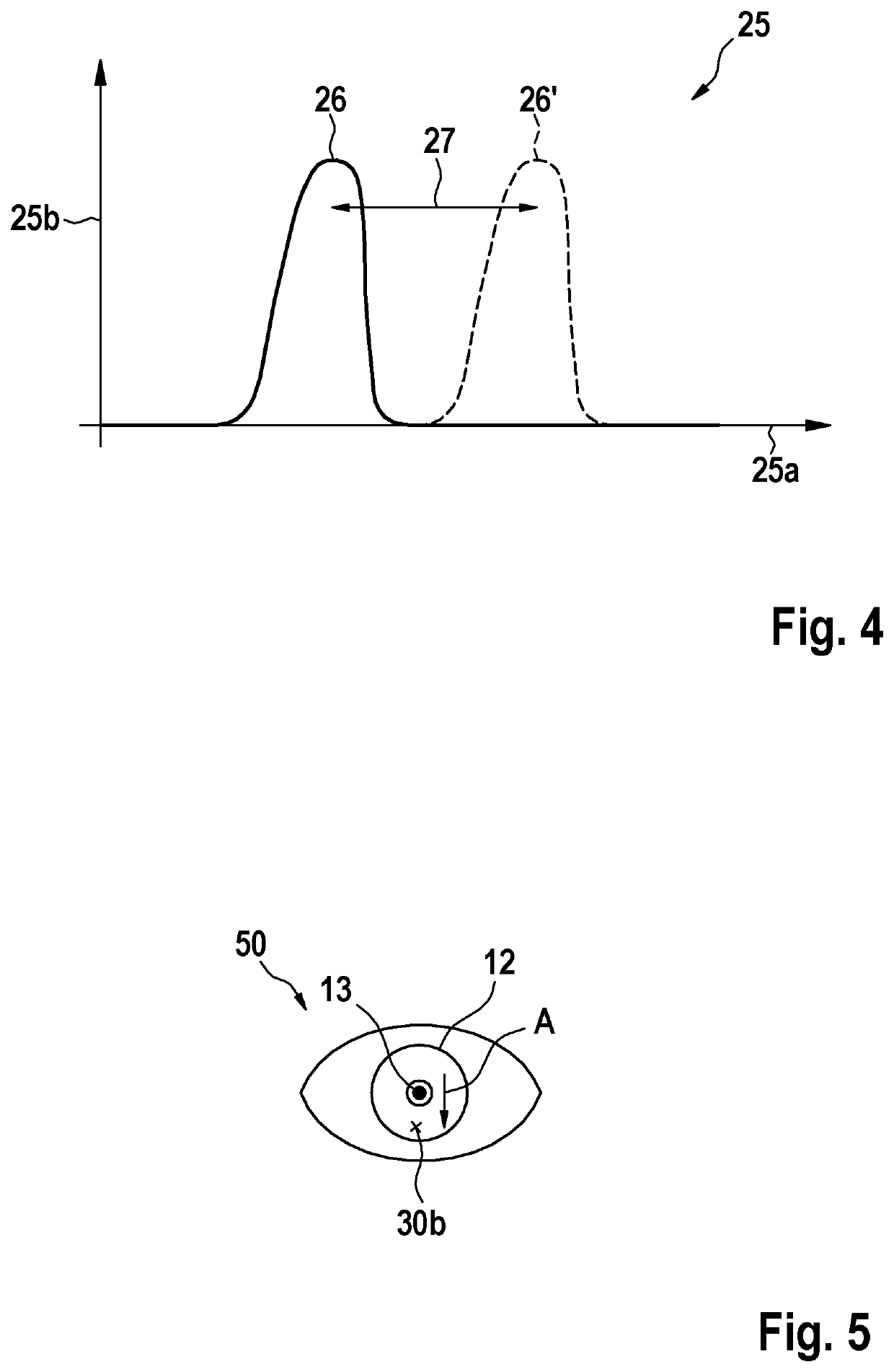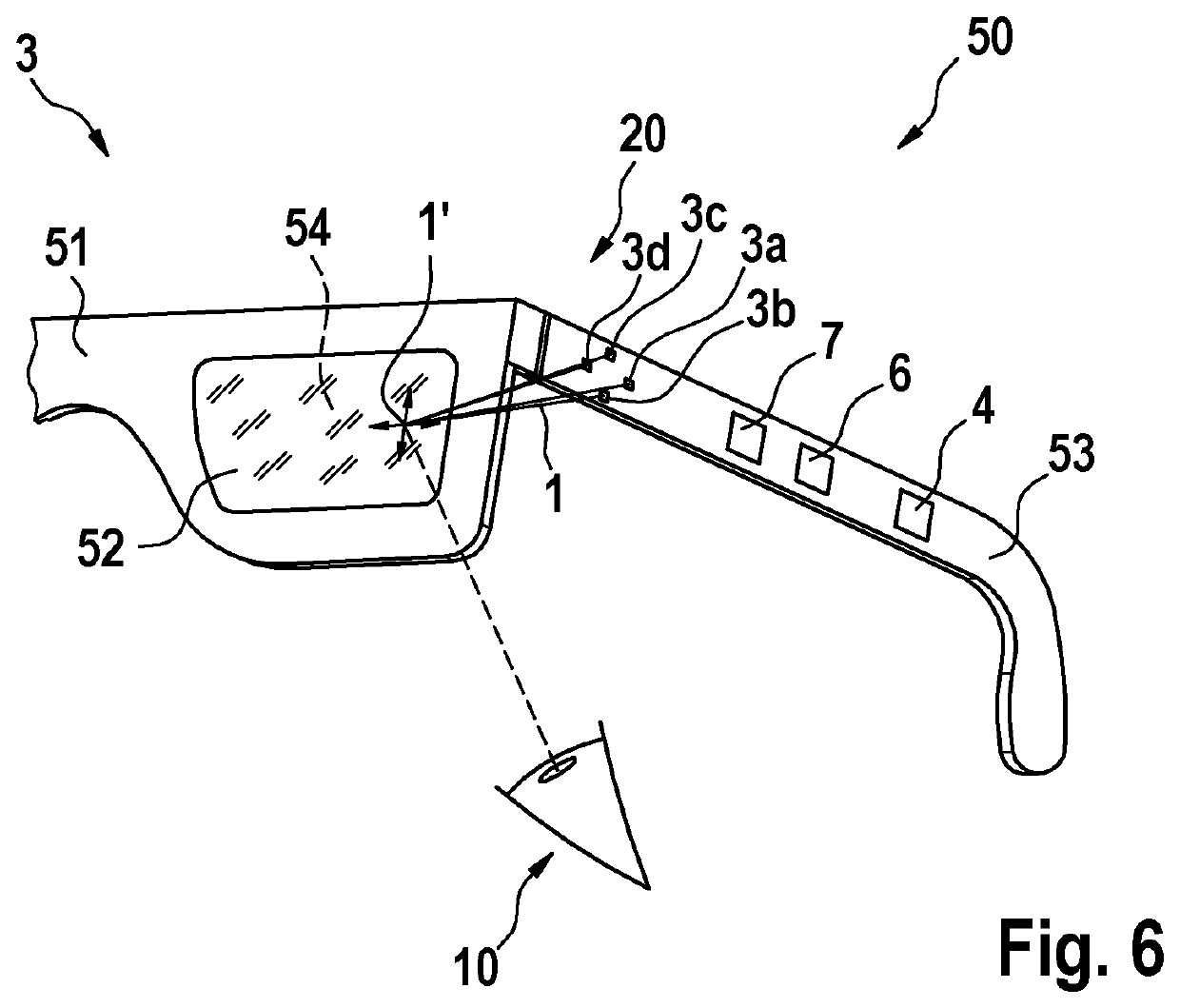Method for operating a pair of smart glasses
a technology for glasses and glasses, applied in the field of smart glasses, can solve problems such as interference with incident laser radiation, and achieve the effect of precise scanning of the ey
- Summary
- Abstract
- Description
- Claims
- Application Information
AI Technical Summary
Benefits of technology
Problems solved by technology
Method used
Image
Examples
Embodiment Construction
[0037]FIG. 1 shows a simplified schematic view of a pair of smart glasses 50 according to a first embodiment of the invention. The smart glasses 50 comprise a spectacle lens 52, a spectacle frame 51 in which the spectacle lens 52 is received, and a spectacle temple 53 for holding the smart glasses 50 on a users head. The smart glasses 50 are thus configured to be worn on a users head.
[0038]The smart glasses 50 comprise a gaze detection arrangement 20, by which a gaze direction of an eye 10 of the user may be determined. For this purpose, the gaze detection arrangement 20 comprises a laser device 3 and a control device 4, which is arranged to operate the laser device 4 to perform a corresponding method for detecting the gaze direction of the eye 10. The control device 4 is arranged in the temple 53 of the smart glasses 50 for compact design.
[0039]The laser device 3 includes a total of five surface emitters 3a, 3b, 3c, 3d, 3e as laser sources. Four of the five surface emitters 3a, 3b,...
PUM
 Login to View More
Login to View More Abstract
Description
Claims
Application Information
 Login to View More
Login to View More - R&D
- Intellectual Property
- Life Sciences
- Materials
- Tech Scout
- Unparalleled Data Quality
- Higher Quality Content
- 60% Fewer Hallucinations
Browse by: Latest US Patents, China's latest patents, Technical Efficacy Thesaurus, Application Domain, Technology Topic, Popular Technical Reports.
© 2025 PatSnap. All rights reserved.Legal|Privacy policy|Modern Slavery Act Transparency Statement|Sitemap|About US| Contact US: help@patsnap.com



